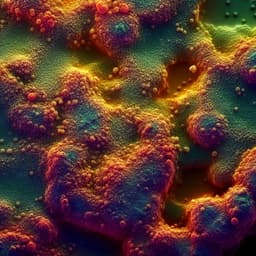
Biology
The role of extracellular polymeric substances of fungal biofilms in mineral attachment and weathering
R. Breitenbach, R. Gerrits, et al.
Explore the fascinating interplay between extracellular polymeric substances (EPS) and mineral weathering through the lens of genetically modified biofilms of the rock-inhabiting fungus Knufia petricola. This research, conducted by Romy Breitenbach, Ruben Gerrits, Polina Dementyeva, Nicole Knabe, Julia Schumacher, Ines Feldmann, Jörg Radnik, Masahiro Ryo, and Anna A. Gorbushina, unveils how melanin production influences EPS generation and mineral dissolution rates.
~3 min • Beginner • English
Related Publications
Explore these studies to deepen your understanding of the subject.







